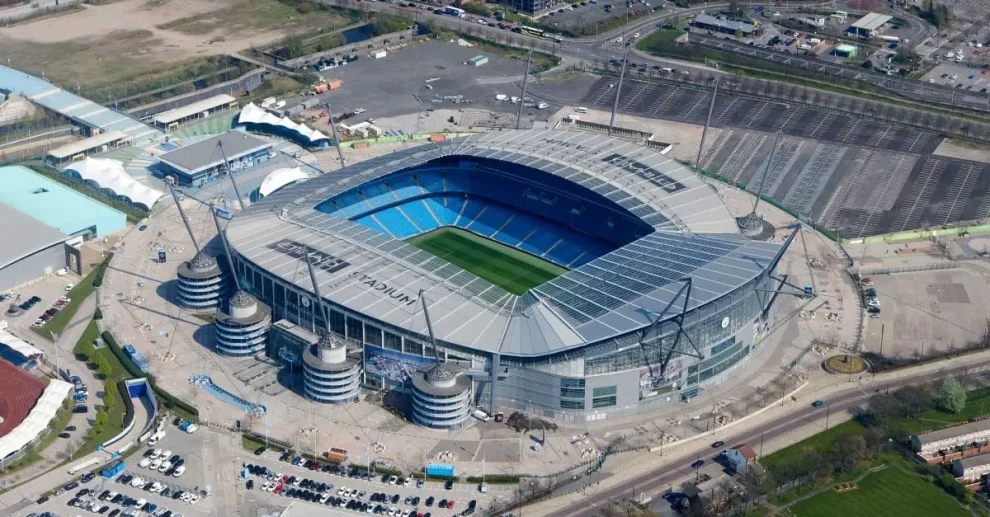The Etihad Stadium, formerly known as the City of Manchester Stadium, is a world-class football stadium located in Manchester, England. It serves as the home ground for Manchester City Football Club, one of the most successful and dominant football clubs in the English Premier League. With its modern design, state-of-the-art facilities, and vibrant atmosphere, the
Etihad Stadium is a symbol of the club’s rise to prominence and success. This article will explore the history, features, and significance of the Etihad Stadium in the world of football.
History and Construction

The Etihad Stadium was constructed for the 2002 Commonwealth Games, hosted in Manchester. After the conclusion of the games, the stadium was transformed into a football venue and became the new home ground for Manchester City Football Club. The stadium was initially known as the City of Manchester Stadium until 2011 when a sponsorship deal with Etihad Airways led to its current name, the Etihad Stadium.
The Etihad Stadium was officially opened on August 10, 2003, with a friendly match between Manchester City and FC Barcelona. The stadium’s capacity at the time of its opening was around 48,000 spectators.
Features and Design
The stadium boasts a modern and aesthetically pleasing design, incorporating elements of traditional football grounds while offering state-of-the-art facilities for players, fans, and visitors. It is constructed in a bowl-like shape, with seating surrounding the pitch, providing an intimate and engaging experience for spectators.
Over the years, the Etihad Stadium underwent several expansions to meet the growing demands of Manchester City’s fanbase. Today, the stadium has a capacity of approximately 53,000 spectators, making it one of the largest football stadiums in the UK.

Inside the stadium, fans are treated to excellent sightlines, ensuring an unobstructed view of the action on the pitch from almost every seat. The stadium’s proximity to the pitch also creates an electrifying atmosphere, enhancing the matchday experience for supporters.
The stadium’s facilities include modern dressing rooms, media facilities, corporate hospitality areas, and concession stands, all designed to offer maximum comfort and convenience for visitors.
Significance and Impact
The Etihad Stadium has become a fortress for Manchester City, where the team has experienced tremendous success over the years. It has witnessed numerous historic moments, including league titles, domestic cup triumphs, and memorable European matches. The stadium has been a vital factor in Manchester City’s rise to prominence in English and European football.
Beyond football, the Etihad Stadium serves as a venue for various events, including concerts and other sports competitions, contributing to the cultural and entertainment scene in Manchester.
Conclusion

The Etihad Stadium stands as a symbol of Manchester City Football Club’s transformation into one of the elite clubs in world football. Its modern design, passionate atmosphere, and iconic moments make it an essential part of the club’s history and identity. As Manchester City continues to compete at the highest level, the Etihad Stadium remains a place where dreams are realized, and footballing excellence is celebrated.



















Add Comment